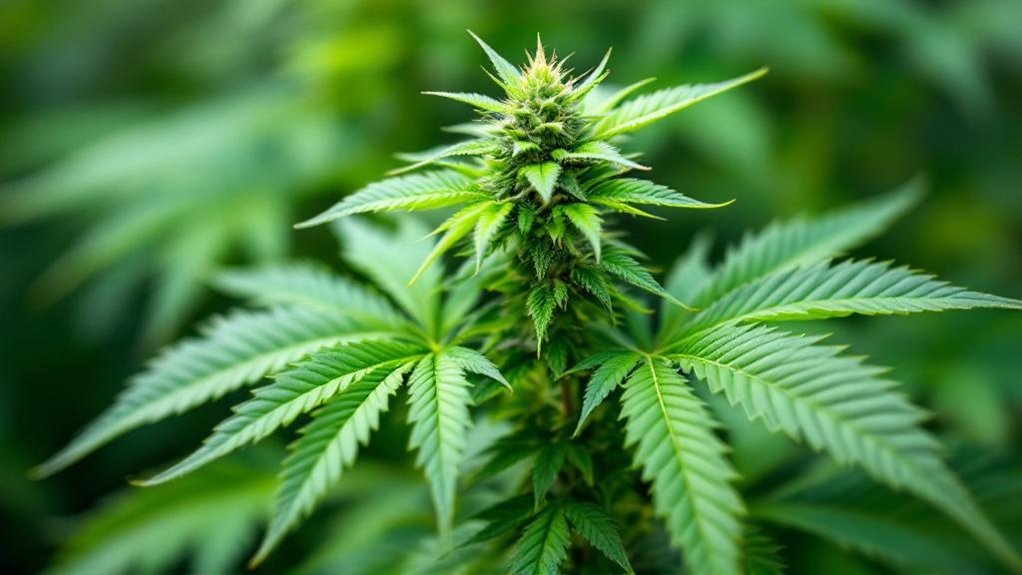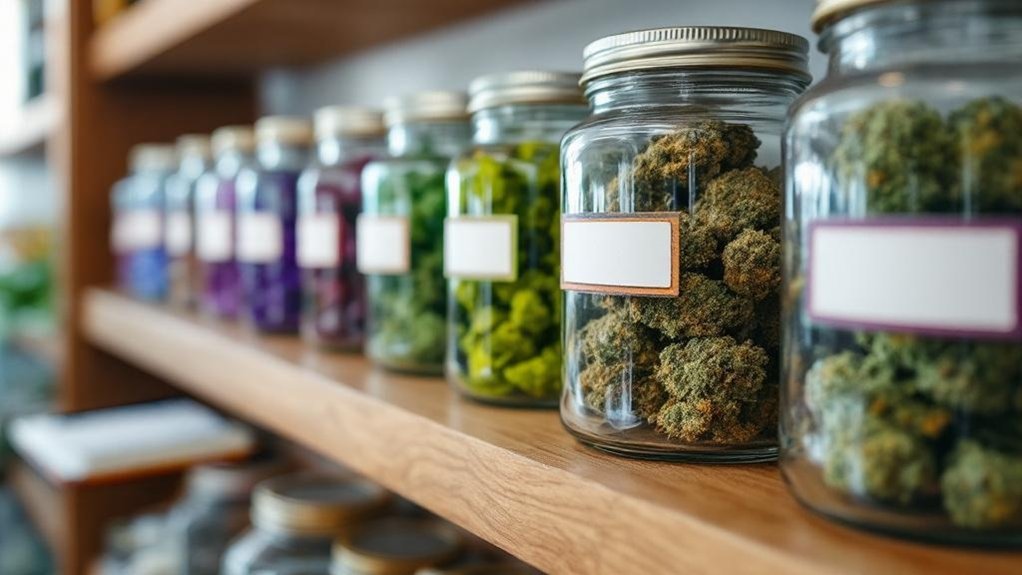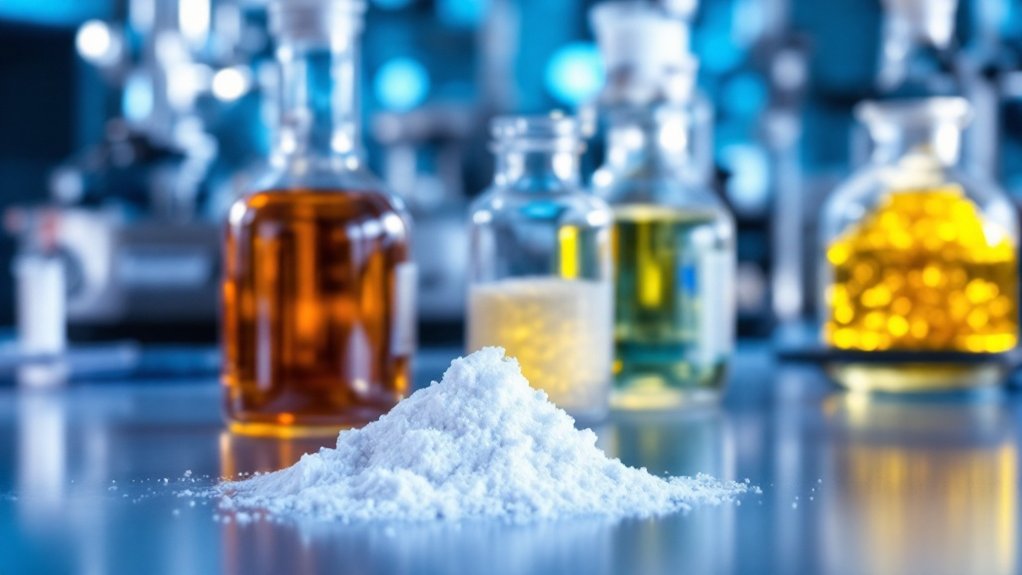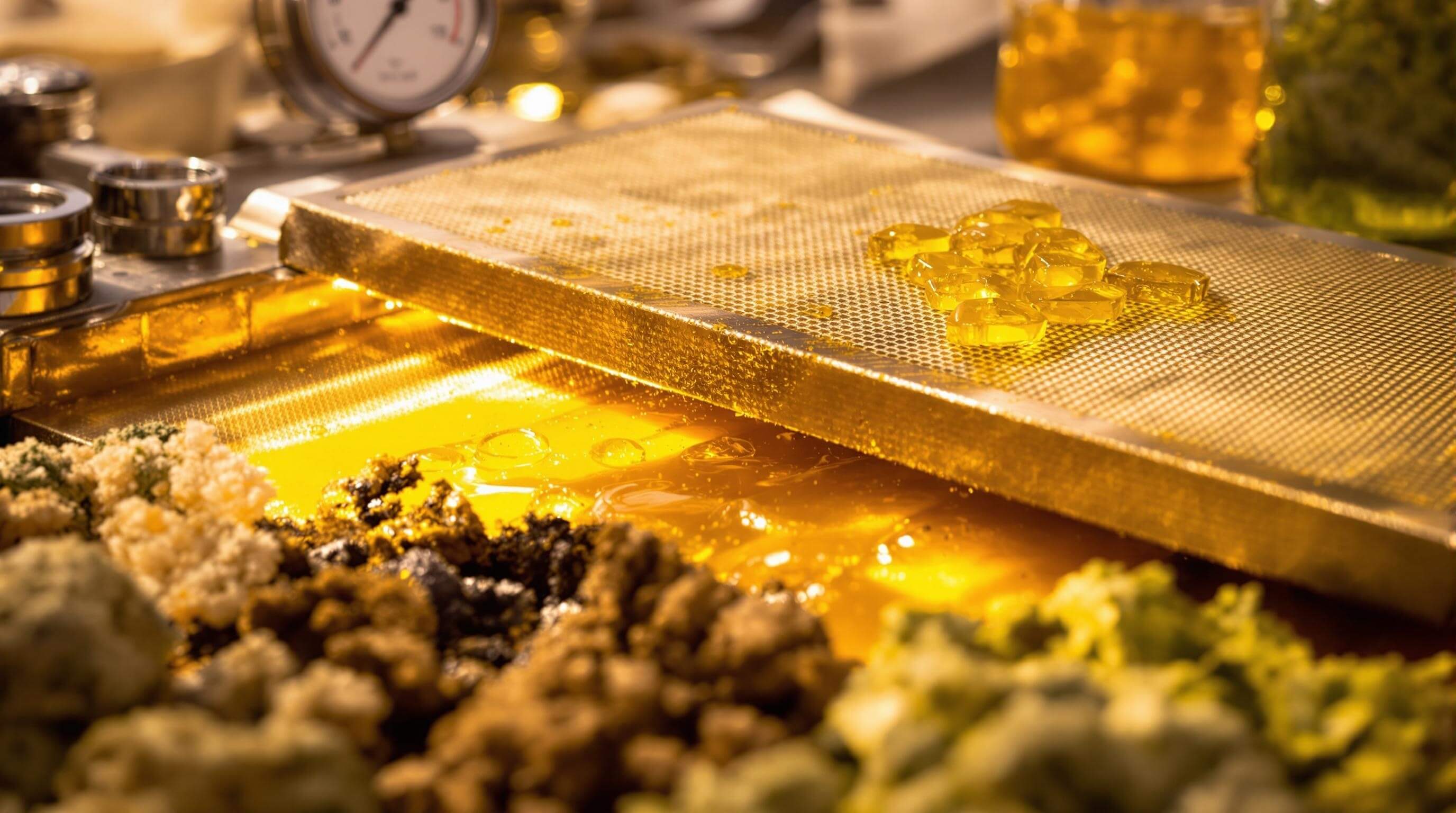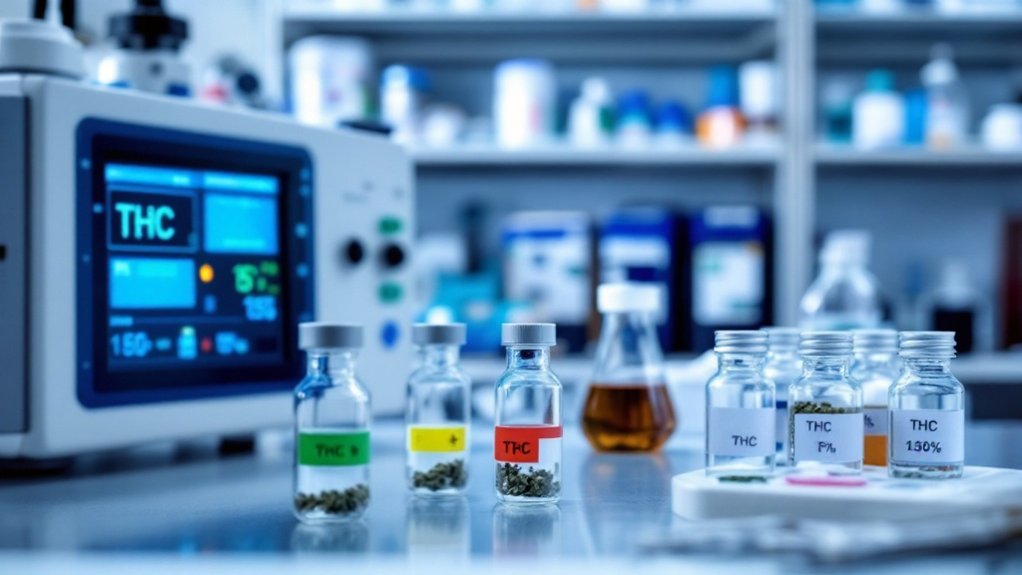Cannabis plants typically produce between 50-130 leaves throughout their lifecycle, with the exact number varying based on genetic factors and environmental conditions. Mature specimens display compound leaves containing 5-13 leaflets, with 7 being most common, arranged in alternating pairs along the stem. Leaf production peaks during vegetative growth and decreases as the plant shifts to flowering, redirecting resources toward reproductive structures. Leaf morphology and abundance serve as key indicators of plant health and developmental progression.

When examining the botanical complexity of Cannabis sativa, one quickly discovers that quantifying the exact number of leaves on a typical plant presents a multifaceted challenge that varies considerably across growth stages, genetic profiles, and environmental conditions. During the initial seedling phase, cannabis plants typically develop between four and six true leaves, establishing the foundation for subsequent vegetative growth, which commences when approximately eight leaves have formed and rapidly accelerates thereafter.
The vegetative stage represents the period of most prolific leaf production, with healthy specimens potentially generating up to 130 leaves under ideal cultivation conditions. This exponential foliar development creates the photosynthetic engine necessary for supporting future flowering sites, while simultaneously establishing structural resilience against environmental stressors. The rapid leaf development during this phase requires ample nitrogen levels to support proper fan leaf formation and overall plant vigor. Proper LED grow lights positioned at optimal distances prevent leaf burning while maximizing photosynthetic activity during this critical growth phase.
As the plant shifts to flowering, however, leaf production gradually decreases as metabolic resources are redirected toward reproductive structures and cannabinoid synthesis.
Cannabis leaves exhibit remarkable morphological diversity, with most mature specimens displaying seven leaflets per compound leaf, though variants with five, nine, eleven, or thirteen leaflets commonly occur in cultivation. In exceptional cases, particularly vigorous plants may produce leaves containing up to seventeen leaflets, while stressed or immature specimens often display only three. This variation in leaflet count typically follows odd-number patterns, though genetic anomalies or environmental pressures occasionally produce even-numbered configurations.
The plant’s architecture features two primary leaf types: larger fan leaves refined for photosynthetic efficiency, and smaller sugar leaves proximal to floral clusters, which contain elevated trichome densities. These leaves emerge at internodal junctions, traditionally in pairs, though some specimens exhibit whorled phyllotaxy with three leaves per node. Ducksfoot mutations create distinctive leaves with fingers that mesh together resembling a duck’s footprint, representing one of several possible pattern variations. Internode spacing and subsequent leaf density greatly impact canopy formation and light penetration throughout the growing medium.
Genetic factors exert primary influence over leaf production and morphology, with sativa-dominant cultivars generally developing more slender, numerous leaflets compared to their indica counterparts. Environmental variables including light intensity, nutrient availability, and cultivation space further modulate leaf development, with ideal conditions promoting both quantitative abundance and qualitative vigor in foliar structures.
Consequently, while precise leaf enumeration remains challenging, understanding the developmental patterns and influencing factors provides valuable insights into plant health, growth stage progression, and cultivation efficacy.
Frequently Asked Questions
Can You Smoke Cannabis Leaves?
While cannabis leaves can technically be smoked, this practice yields considerably diminished psychoactive effects compared to flowers due to their substantially lower THC concentration.
The high chlorophyll and fibrous content in leaves produces harsh smoke that may cause respiratory irritation, headaches, and an unpleasant taste experience.
Cannabis leaves are more commonly repurposed for alternative applications including edibles, teas, oils, and nutritional supplements, where their milder cannabinoid profile and nutritional properties can be utilized without the respiratory risks associated with combustion.
What Factors Influence the Number of Leaves on a Cannabis Plant?
The number of leaves on cannabis plants is influenced by several key determinants, including genetic factors such as strain type (sativa versus indica or autoflowering varieties), plant maturity and growth stage, and various environmental conditions.
Nutrient availability, particularly nitrogen levels, considerably affects leaf production, while light intensity, photoperiod duration, temperature ranges, and humidity levels create the foundation for ideal vegetative development.
Plant health factors, including pest infestations and disease presence, may reduce overall leaf count through premature defoliation or growth inhibition.
Do Different Cannabis Strains Have Varying Leaf Counts?
Cannabis strains exhibit significant variation in leaf counts, primarily determined by genetic lineage.
Sativa varieties typically develop 9-13 slender fingers per leaf, while indica strains generally display 7-9 broader fingers, and ruderalis types commonly produce only 3-5 narrow fingers per leaf.
Hybrid strains manifest intermediate characteristics, blending parental traits in both count and morphology.
Environmental stressors, plant maturity, and genetic mutations further contribute to leaf count variability, occasionally resulting in atypical formations that deviate from standard strain-specific patterns.
How Do Leaf Numbers Change Throughout the Growing Cycle?
Leaf numbers in cannabis undergo distinct changes throughout the cultivation cycle.
During the seedling phase, plants exhibit minimal foliage with 4-6 simple leaves.
The vegetative stage marks dramatic proliferation, potentially reaching 130+ leaves with complex morphology featuring 7-13 leaflets per leaf.
As pre-flowering commences, leaf production decelerates while existing foliage maintains photosynthetic functions.
The flowering phase demonstrates a significant reduction in new leaf formation as metabolic resources redirect toward reproductive structures, with older leaves naturally senescing.
Are Leaves Important for Determining Plant Health and Quality?
Leaves function as essential diagnostic tools for cultivators, serving as primary indicators of overall plant health through their color, structure, and quantity.
The presence of abnormalities, such as even-numbered finger patterns or irregular leaflet formations, typically signals nutrient deficiencies, environmental stress factors, or genetic deformities requiring intervention.
Moreover, leaf health directly correlates with photosynthetic efficiency, which fundamentally determines energy production for flower development, cannabinoid synthesis, and ultimate yield potential in mature specimens.
Regular foliar assessment enables early detection of physiological issues before they compromise crop quality.
